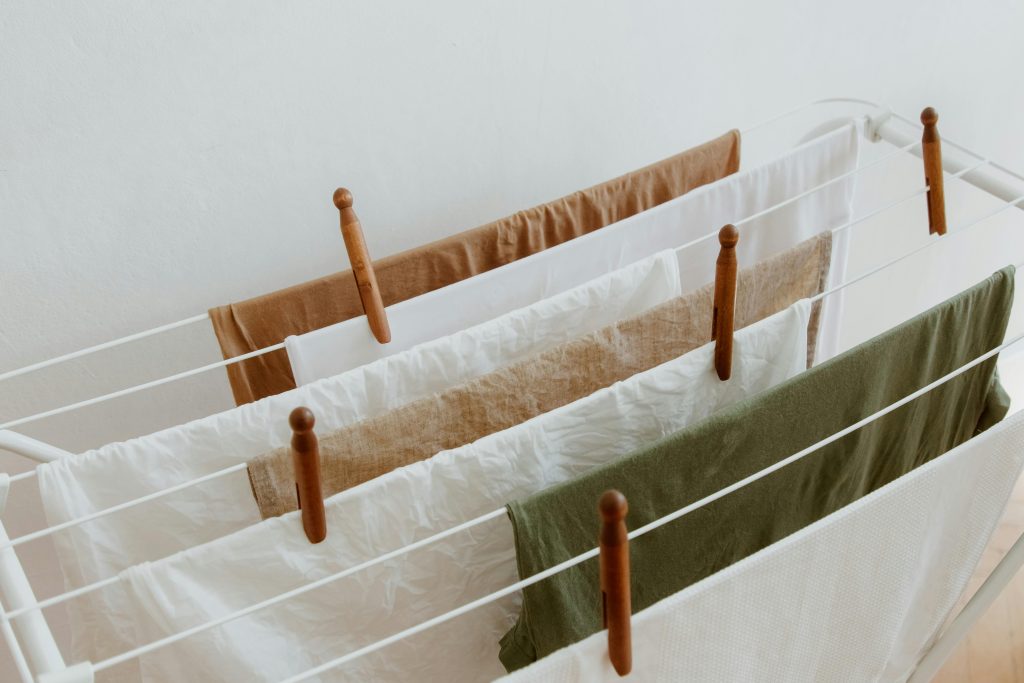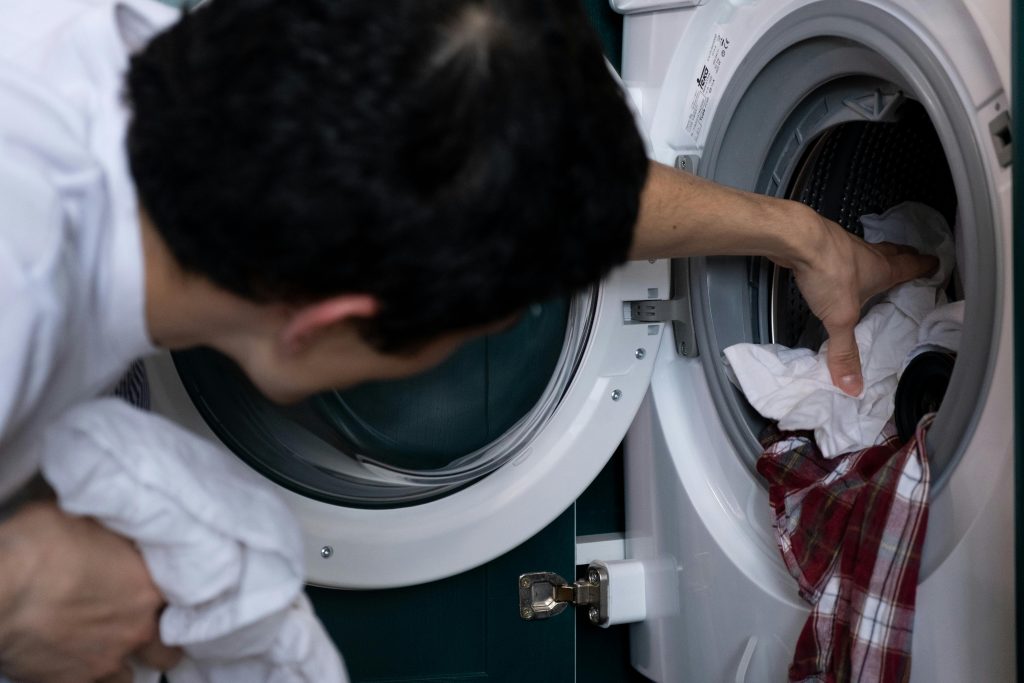During rainy seasons, it’s not uncommon to place your laundry to dry inside. Methods such as leaving them close to heaters or on radiators help laundry dry faster but at a cost. Drying clothes indoors increases humidity indoors by 30%, creating the ideal environment for harmful mold growth. A single load of wet washing can contain almost 2 liters of water, which releases into the room during the drying process. Research shows that 87% of people dry clothes indoors during winter.
When moisture evaporates from wet clothes, it condenses on cold surfaces like windows, walls, and ceilings. This condensation provides ideal breeding conditions for various mold species. The problem becomes worse in poorly ventilated spaces where moisture has nowhere to escape. Without proper airflow, damp conditions can persist for days or weeks.
The Science Behind Mold Growth

Mold thrives in environments with relative humidity above 55%, especially in indoor spaces with inadequate ventilation. Indoor humidity levels should stay between 30% and 50% and should have sufficient ventilation to prevent mold growth. Mold spores begin spreading rapidly throughout indoor spaces, when humidity exceeds 60%. The most common mold species in damp homes are penicillium and aspergillus which, if left unattended, poses significant health risks.
Aspergillus fumigatus is a dangerous fungus that releases microscopic spores into the air that people inhale without realizing. Moisture from drying clothes indoors encourages the growth of mold spores. These spores can survive in buildings for extended periods, especially if conditions are optimal. Temperatures between 99 and 109 The fungus grows optimally in temperatures between 99 °F and 109 °F degrees.
Aspergillus Fumigatus

Aspergillus fumigatus causes serious lung infections, particularly in those who are immunocompromised and those with breathing problems. This fungus is found worldwide and can colonize in bronchial tracts of asthmatic patients. It produces small, dry spores that become easily airborne. Most people can breathe in these spores daily without getting sick. However, if left to colonise, aspergillus fumigatus can cause severe breathing difficulties and chronic coughing. For immunocompromised individuals, exposure can lead to life-threatening infections.
Read More: This Type of Coffee May Raise Your Risk of Macular Degeneration By 700%
Who Faces the Greatest Risk

People with compromised immune systems face the highest risk from mold exposure. This includes cancer patients undergoing chemotherapy, HIV/AIDS patients, and organ transplant recipients. Individuals with asthma, cystic fibrosis, or chronic lung disease are particularly vulnerable. Children, elderly people, and those with autoimmune disorders also face increased risks.
Recognizing the Health Symptoms

Mold exposure can cause various respiratory symptoms that can be mistaken for common illnesses. Early symptoms of mold exposure include persistent coughing, wheezing, and shortness of breath. Those who have been exposed to mold may experience chest tightness, headaches, and fatigue. More severe cases involve fever, night sweats, and coughing up blood.
Allergic reactions can manifest as sneezing, runny nose, and itchy eyes. Some people develop skin rashes or eczema from prolonged exposure. Weight loss and chronic fatigue indicate more serious fungal infections. These symptoms often worsen when spending time in rooms where clothes are drying.
The Craig Mather Case Study

Craig Mather, a 43-year-old father from Bolton, was diagnosed with a lung infection. He suspects this infection is due to drying clothes in doors. He also had a history of asthma and tuberculosis, making him particularly susceptible to lung infections. Mather regularly dried clothes in his bedroom during winter months without realizing the consequences that would follow.
His condition deteriorated significantly until doctors diagnosed chronic pulmonary aspergillosis. He required special antifungal medications to fight the persistent fungal infection. Mather noticed his symptoms worsened whenever he dried laundry in the bedroom. After stopping indoor clothes drying, his health improved dramatically within a year.
Treatments and Medications

Antifungal medications are the primary and most effective treatment for aspergillosis infections. The most effective drugs include voriconazole and itraconazole. Treatment typically requires several weeks of antifungal treatment to ensure the spores are no longer there. Severe cases may need intravenous medications or surgery.
Prevention and Safe Drying Alternatives

Proper ventilation is crucial for preventing mold growth in indoor spaces. Keep windows open when weather permits to allow moisture to escape. If you are drying clothes indoors, use dehumidifiers to maintain indoor humidity below 50% to prevent any mold growth. Position drying racks away from bedrooms and living areas. Furthermore, position your drying laundry in an open space with adequate ventilation.
Read More: Eat These Common Foods to Reduce Alzheimer’s Risk – Experts
Creating a Safer Home Environment

Adequate ventilation prevents moisture buildup and protects your lungs and overall health. Keep doors open to promote air circulation throughout the house. Use heated drying racks in well-ventilated spaces rather than bedrooms.
Regular cleaning and maintenance help prevent mold growth. Dry all damp surfaces that have come into contact with surfaces within 24 to 48 hours. Clean existing mold with water, detergent, and vinegar solutions. Dispose of all the cleaning items used to clean the mold. These simple steps can significantly reduce health risks while maintaining comfortable living conditions.
